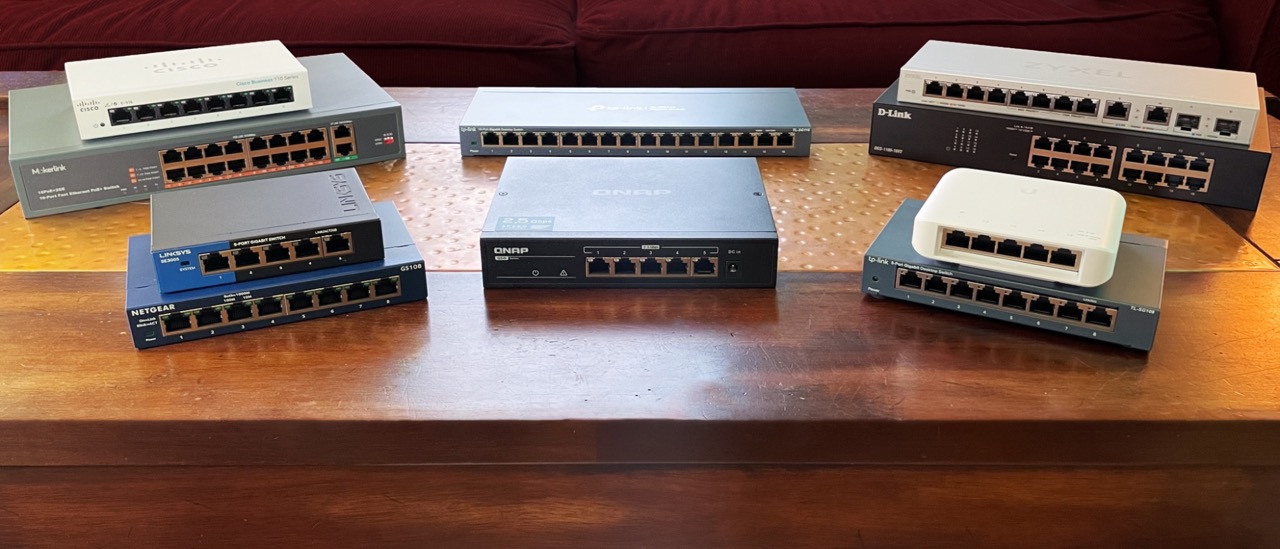Introduction
When it comes to networking, the term "switch" holds significant importance. In the world of technology, network switches play a crucial role in facilitating the flow of data within a network. As the demand for faster and more efficient data transfer continues to grow, the size and capacity of network switches have become a topic of interest and intrigue. Understanding the largest network switches available in the market today requires delving into the realm of networking technology, exploring the capabilities and advancements that have led to the development of these colossal devices.
Network switches are the unsung heroes of modern connectivity, enabling the seamless transmission of data packets across various devices within a network. The evolution of networking technology has seen the emergence of increasingly large and powerful switches, capable of handling immense volumes of data traffic. This has paved the way for the development of some of the largest network switches in existence, each designed to meet the escalating demands of today's data-driven world.
As we embark on this exploration of the largest network switches, it is essential to grasp the fundamental principles of these devices and the pivotal role they play in the realm of networking. By understanding the core functions and capabilities of network switches, we can appreciate the significance of their size and capacity in meeting the ever-growing demands of modern network infrastructures. Let's unravel the intricacies of network switches and delve into the realm of colossal networking devices that are shaping the future of data transmission.
What Is a Network Switch?
A network switch is a fundamental component of modern computer networking that operates at the data link layer of the OSI model. It serves as a central connection point for various devices within a local area network (LAN), enabling the efficient and secure transfer of data between these devices. Unlike hubs or repeaters, which simply broadcast data to all connected devices, a network switch intelligently forwards data only to the intended recipient, optimizing network performance and reducing congestion.
Network switches use MAC addresses to determine the appropriate path for data transmission, allowing for targeted communication between devices. By creating a dedicated connection between the sender and receiver, switches facilitate faster and more reliable data transfer, enhancing the overall efficiency of the network. Additionally, switches can operate in full-duplex mode, enabling simultaneous data transmission and reception, further improving network throughput.
These devices come in various sizes and configurations, ranging from small, unmanaged switches suitable for home or small office use to large, enterprise-grade switches designed to support extensive network infrastructures. The proliferation of networked devices and the increasing demand for high-speed data transfer have driven the development of advanced switch technologies, leading to the creation of larger and more powerful network switches capable of handling substantial data traffic.
Understanding the core functions and capabilities of network switches is essential for comprehending the significance of their size and capacity in the context of modern networking. As we delve into the realm of colossal networking devices, it is crucial to recognize the pivotal role that network switches play in enabling seamless communication and data transmission within complex network environments.
How Large Can Network Switches Get?
The size of network switches can vary significantly, ranging from compact, desktop models to expansive, chassis-based switches that occupy multiple rack units in data center environments. The physical dimensions of a network switch are influenced by several factors, including the number of ports, power capacity, cooling requirements, and the overall design architecture.
Small to medium-sized switches typically feature a compact form factor, making them suitable for deployment in constrained spaces such as offices, classrooms, and small business environments. These switches may offer a limited number of ports, often ranging from 5 to 48, and are designed to meet the networking needs of smaller-scale deployments.
As network infrastructures scale and demand for connectivity grows, larger switches become necessary to accommodate the increased number of devices and data traffic. Enterprise-grade switches are engineered to support extensive network environments, featuring a higher port density and advanced capabilities such as modular expansion slots, redundant power supplies, and sophisticated management functionalities.
Chassis-based switches represent the pinnacle of scale and capacity in the realm of network switches. These colossal devices consist of a modular chassis that can accommodate numerous line cards, supervisor modules, and other components, allowing for unparalleled scalability and flexibility. Chassis-based switches are commonly found in data center and enterprise networking environments, where they serve as the backbone of complex and high-performance networks.
Moreover, advancements in networking technology have led to the development of ultra-high-capacity switches designed to meet the demands of hyperscale data centers and cloud computing infrastructures. These switches boast an extraordinary number of ports, massive forwarding capacity, and cutting-edge features to support the relentless growth of data traffic in today’s digital landscape.
As the requirements for network capacity, speed, and reliability continue to escalate, the size and capacity of network switches will undoubtedly expand to meet these evolving demands. The relentless pursuit of innovation in networking hardware will drive the development of even larger and more powerful switches, shaping the future of network connectivity and data transmission.
The Largest Network Switches in the Market
The relentless evolution of networking technology has given rise to a new breed of network switches that push the boundaries of size, capacity, and performance. In the competitive landscape of networking hardware, several manufacturers have introduced colossal switches designed to address the escalating demands of modern network infrastructures.
One prominent example of a massive network switch is the Cisco Nexus 7700 series. This formidable platform is engineered to deliver exceptional scalability and performance, featuring a high-density modular design that can accommodate a vast number of ports and line cards. With advanced features such as virtual PortChannel (vPC) technology, fabric extender support, and deep buffer capabilities, the Nexus 7700 series exemplifies the pinnacle of scale and capacity in the realm of network switches.
Another noteworthy contender in the realm of colossal switches is the Arista 7500R series. Renowned for its exceptional throughput and ultra-low latency, the Arista 7500R represents a powerhouse in the world of high-performance networking. Equipped with advanced telemetry and analytics capabilities, along with support for extensive network virtualization, this series of switches is tailored to meet the stringent requirements of modern data center environments.
Furthermore, the Juniper Networks QFX10000 line of switches stands as a testament to the pursuit of unparalleled scale and performance in networking hardware. Boasting massive port density, high-speed interfaces, and seamless integration with Juniper’s advanced network operating system, the QFX10000 series is designed to address the demands of cloud-scale networking, offering a robust foundation for agile and efficient data center operations.
These examples represent just a fraction of the colossal network switches available in the market today. As the digital landscape continues to evolve, the demand for larger, more powerful switches will persist, prompting networking vendors to innovate and introduce groundbreaking solutions that redefine the boundaries of network scale and capacity.
By embracing the capabilities of these colossal switches, organizations can lay the groundwork for resilient, high-performance network infrastructures that can seamlessly accommodate the relentless growth of data traffic and the ever-expanding array of connected devices.
Conclusion
As we conclude our exploration of the largest network switches, it becomes evident that these colossal devices represent the epitome of scale, capacity, and performance in the realm of networking hardware. The evolution of networking technology has led to the development of formidable switches that can accommodate the escalating demands of modern network infrastructures, offering unparalleled scale, reliability, and efficiency.
From the expansive modular designs of chassis-based switches to the cutting-edge features of ultra-high-capacity platforms, the market is replete with colossal switches that embody the relentless pursuit of innovation in networking hardware. These devices serve as the cornerstone of resilient and high-performance network infrastructures, enabling organizations to meet the challenges of burgeoning data traffic, diverse workloads, and the proliferation of connected devices.
As the digital landscape continues to evolve, the demand for larger, more powerful switches will persist, prompting networking vendors to innovate and introduce groundbreaking solutions that redefine the boundaries of network scale and capacity. By embracing the capabilities of these colossal switches, organizations can lay the groundwork for agile, efficient, and future-ready network infrastructures that can seamlessly accommodate the relentless growth of data traffic and the ever-expanding array of connected devices.
Ultimately, the largest network switches in the market symbolize the culmination of decades of innovation and progress in networking technology, shaping the future of network connectivity and data transmission. As organizations navigate the complexities of modern networking, these colossal devices stand as beacons of reliability, scalability, and performance, offering a robust foundation for the digital ecosystems of tomorrow.

























